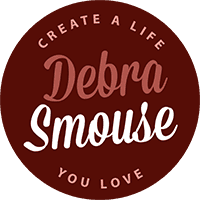Anger, frustration, regret, obsession, longing, grief… All part of the human experience. Not the greatest part, right, but still a significant one, one that cannot be denied, regardless of how much we’d like it to disappear. Yet who knows? Maybe happiness would not be so happy, or excitement would not be so exciting, if we had been given the chance to live a life of only goodness, untouched by shadow. Are we inherently like that? Was grief created only so that we might experience happiness in its purest form? Perhaps if we were given joy with no limits, no restrictions, and no loss, we would not even know what to do with it. Or perhaps this is only what we believe now, after our existence has already been tainted with everything it means to live, the bruises, the longings, the contradictions. Maybe we like the rollercoaster after all. Or maybe we simply learned to like it, because it was the only ride available, even if it never was and never will be our favorite. The essence of life is, honestly, too complicated to be labeled. We are too complicated, in fact. We long for the rain, and then we cry because the water is too cold. Then we lie to ourselves, convincing our minds that the water is warm enough to bathe in. And somehow, slowly, we get used to it. We even come to love it, until, suddenly, without warning, we despise it. That’s who we are. That’s what it means to be human.
We are creatures of contradiction, aching for what we do not have and restless with what we hold. Perhaps the truth is not simply that suffering sharpens joy, but that both are entangled, inseparable, two halves of the same pulse that keeps us alive. Without the storm, the stillness would lose its meaning. Without the bitter, the sweet would fade into dullness. And maybe this is the secret of our restless hearts: we do not merely endure the turbulence of living, we are made of it.
But the question remains: what do we do with all of it? With the anger that rattles in the chest, with the longing that weighs in the stomach, with the grief that feels too heavy to carry? Some people shout. Some people run. Some people stay still. And some, some bake. Baking, in its quiet alchemy, offers a peculiar kind of therapy. It asks for patience when rage wants to rush. It demands precision when the mind feels scattered. It transforms raw, messy ingredients into something whole, something sweet, something worth sharing. In that way, baking is not just an act of creation, but of translation: turning emotions into flavors, textures, and colors.
So what if, instead of resisting our feelings, we gave them recipes? What if we matched every storm within us to a desert that could hold it, soften it, and turn it into something beautiful?
The Facets Of Unbearable Emotions In Sweets
Some emotions scream, some whisper, some ache in silence. In a grey kitchen, their voices take shape in bowls and pans, each recipe a translation of what cannot be spoken aloud. It is true, trust us. Grey kitchens, in their quiet steadiness, are where unbearable emotions find their sweetness, where bitterness can be folded into sugar, and sorrow can rise, layer by layer, into something we dare to taste. Just keep reading, and you’ll see.
Rage As A Red Velvet Cake
Anger arrives uninvited, pulsing hot beneath the skin. It wants to scorch, to destroy, but in the kitchen, it is transfigured, a ritual in crimson. The red velvet cake rises dark and smooth, a paradox of fire dressed in silk. Beneath its vivid scarlet lies cocoa’s quiet bitterness, a reminder of the shadows beneath every blaze. The cream cheese frosting cools, yet never erases the burn; it only teaches balance. To slice into red velvet is to taste fury softened into elegance, a passion too fierce to hide, too beautiful to waste. Anger, transformed, becomes something we dare to savor.
Longing As A Carrot Cake
Longing is never simple. It carries sweetness and ache in equal measure, a taste both familiar and elusive. Carrot cake embodies this paradox: humble roots grated fine, hidden within layers of spice and sugar, transformed into something unexpectedly tender. Each bite whispers of comfort, yet leaves a hollow space, as though something essential is missing. The cream cheese frosting soothes, but it cannot fill the absence at the core. Longing is that flavor that satisfies and haunts, nourishing and incomplete all at once. A cake of memory, of desire, of something we almost touch, but never fully hold.
Regret As A Dark Chocolate Cake
Regret lingers like smoke in a quiet room, heavy, bittersweet, impossible to ignore. Dark chocolate layers mirror its weight, dense and rich, almost bitter enough to sting. Salted caramel seeps through like memories that stick, sweet, sticky, unavoidable. Each bite holds the echo of choices we cannot undo, pleasures or pains that leave their mark long after the moment has passed. To taste this cake is to taste the ache of what might have been, cloaked in indulgence. Regret, like chocolate and caramel, is seductive and mournful at once, something we revisit, reluctantly, craving its sharp, haunting sweetness.
Grief As A Black Forest Cake
Grief is a forest at midnight, layered, dense, and shadowed, where every step stirs echoes of what has been lost. Black chocolate sponge forms the dark canopy, heavy and bittersweet, while sour cherries bleed like memories too sharp to forget. Cream folds between layers like fleeting comforts, soft and pale against the weight of shadowed earth. Eating this cake is a quiet surrender, a taste of sorrow folded into sweetness, reminding us that even in loss, there is texture, complexity, and an echo of beauty. Grief is a layered journey, dark, rich, and lingering, impossible to rush, yet impossible to ignore.
Obsession As A Mille-Feuille
Obsession is a labyrinth, delicate and consuming, built of repeated layers that rise higher than reason allows. Mille-feuille embodies this fixation: crisp pastry, thin and fragile, stacked with cream until it teeters, almost beyond endurance. Each layer mirrors the thoughts that spiral, repeating, folding back on themselves, impossible to set aside. It is beautiful, intricate, addictive, yet exhausting, a sweetness that entangles rather than satisfies. To taste it is to confront desire made tangible, the pleasure and strain of longing uninterrupted. Obsession, like this pastry, is both art and trap, delicate and dangerous, compelling us to return even when we know we should step away.
Finding Calm in the Whisk and the Whirl
In the end, baking won’t erase our storms, but it can give them shape, sweetness, and a softer edge. A grey kitchen becomes more than walls and counters—it’s a refuge where emotions are stirred, layered, and tasted until calm finally rises.
Want to learn to create your own special recipe? Get help exploring your story.
Snag a free workbook and get inspiration on all the ways to love your life even more.
>>Click Here to Discover Additional Articles with Strategies to Get Your Life Back on Track <<









